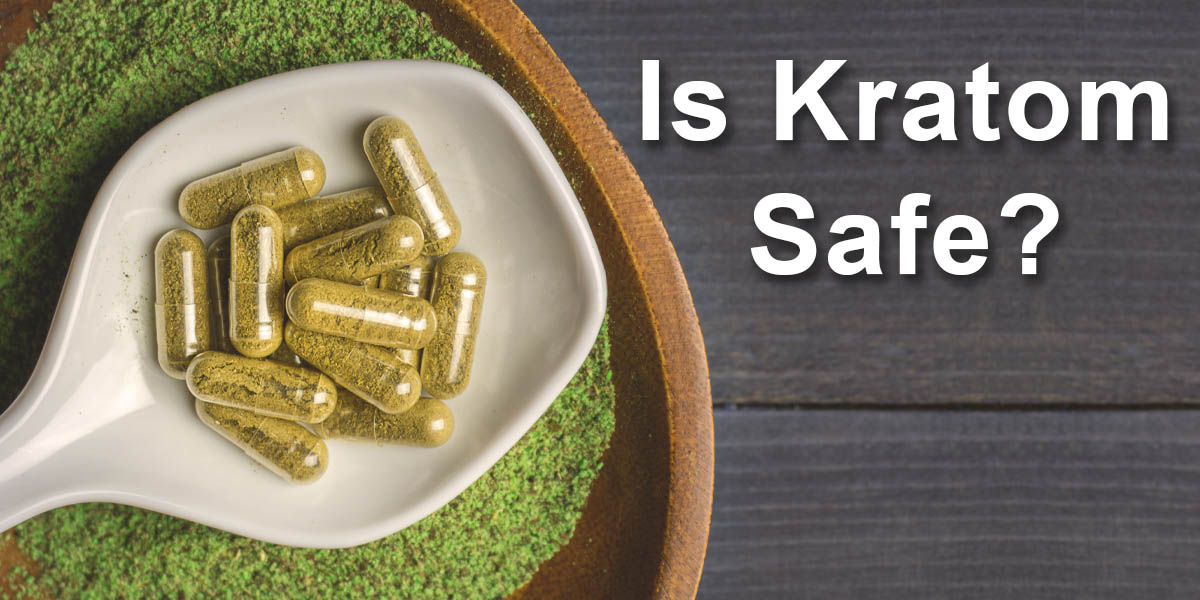Kratom comes from the leaves of a tropical tree indigenous to Southeast Asia. It produces both stimulant- and opioid-like effects. People use kratom for a variety of reasons, from treating anxiety to weaning off of prescription drugs. And for others, kratom use starts out as purely recreational. Because it’s not entirely illegal across the US, it’s possible to find bars, cafes and co-working spaces specifically centered on kratom use and the community that surrounds it. It’s also widely available from a variety of outlets, from head shops to gas stations to online stores.
Because kratom is natural in origin, it’s often marketed as a safe alternative to synthetic drugs. But as many users are finding out, it’s not so benign after all. The truth is, kratom is highly addictive and can lead to serious health risks. Those who develop physical dependency on kratom experience withdrawals when they try to quit that mimic those of opioid addiction. That’s why, at The Sanctuary, we’re seeing an increasing number of clients seeking help for kratom addiction.
Let’s look closer at what kratom is, and why it’s not as safe as sellers claim.
Side Effects of Kratom
Kratom works by affecting your body’s central nervous system. Because of this, it can cause dizziness, delusion and seizures, as well as suppress breathing. It can also negatively impact brain function when combined with prescription medications. Other side effects of kratom include, but aren’t limited to:
- Nausea and vomiting
- Urinary and digestive tract dysfunction
- Muscle aches
- Liver damage
- Agitation
- Drowsiness
- Confusion
“Although people who take kratom believe in its value, researchers who have studied kratom think its side effects and safety problems more than offset any potential benefits,” say experts at Mayo Clinic about the dangers of kratom. “Poison control centers in the United States received about 1,800 reports involving use of kratom from 2011 through 2017, including reports of death. About half of these exposures resulted in serious negative outcomes such as seizures and high blood pressure.”
Kratom was once thought to be a safe alternative to narcotic painkillers. However, “studies on the effects of kratom have identified many safety concerns and no clear benefits.”
Public Safety Concerns
Kratom is illegal in the Southeast Asian countries where it originates. But because it’s a new substance on the US market, regulations have yet to catch up. It’s illegal in some, but not all states, and in some local communities. It’s also illegal to sell online for human consumption, but vendors get around this by marking it as a non-consumable item (though it’s clearly marketed for ingestible use).
The DEA, however, aims to make kratom a Schedule I drug. This is due to concerns about its safety and its potential to be toxic to organs. According to the Food and Drug Law Institute, “Kratom use is increasing and is associated with significant toxicities. Our findings suggest kratom is not reasonably expected to be safe and poses a public health threat due to its availability as an herbal supplement.”
And, according to a 2019 study published by the American College of Clinical Pharmacy, “Kratom use is increasing and is associated with significant toxicities. Our findings suggest kratom is not reasonably expected to be safe and poses a public health threat due to its availability as an herbal supplement.”
A Harmless High?
People often start using kratom because it seems like a safe, natural medicine that can solve problems typically addressed by pharmaceuticals.
“One of the issues with kratom,” says a former Sanctuary client, “is that it’s sold and marketed as this natural substance. It’s a leaf, a plant, non-toxic, non-addictive and organic. It’s a miracle drug. Or if you ask most people, it’s not a drug at all. The problem is that none of this is really true. While it may be naturally occurring, by the time you get it on the shelves it’s absolutely not that. In the vitamin sections of health food stores, you can find kratom in capsules, powder or liquid. The branding on the packages makes it look like a healthful option for pain management or to help you get off of other opiate drugs.”
Another Sanctuary graduate echoes a similar insight: “They tell you it’s natural, that it’s a tree that comes from Asia and it’s nothing but the leaves steeped in water. And so you think, ‘Alright, this seems like something organic that you’d find at the health food store.’ It comes in a few different strains. So whatever you need in life – whether it’s energy, relaxation or feeling good – they have a strain for it. But what they don’t tell you is the dark side of the drink. In Southeast Asia where it comes from, it’s illegal. So that tells you something right there.”
Selling the Holistic Lifestyle
Because retailers tout it as a natural, non-addictive and mellow substance, people who don’t typically use “hard” drugs can still find themselves in kratom’s grip. Our client tells of his experience:
“I’ve never really been a drinker. Kratom found its way into my life when I was around 28. In Florida where I’m from, kratom bars are kind of co-op working spaces where it’s all about the vibe. It’s the music, it’s the setting. If you’re in the spiritual or conscious scene, you vibe to it.”
But because, like opioids, kratom can be extremely physically addictive, people often find themselves in hot water when they’re least expecting it. “In the community, it’s an unspoken thing that you slowly become addicted to it. You act like you have it under control, that it’s not messing with your life. It’s not as bad as drinking – they’re always quick to tell you that you can’t get a DUI on it.
It’s so easy to fall into that holistic lifestyle – that these people are all yogis coming after yoga class, or people meditating in the park and going for a run. But it’s an unspoken thing that everyone’s addicted, and no one wants to admit it. It pretty much dictates their life.”
“Very Potent Drug Water”
Kratom isn’t related to the poppy plant, but it produces very similar effects to opiates and their synthetic counterparts, opioids. That’s because it works on your brain’s opioid receptors. According to Harvard Health contributor and author of Free Refills: A Doctor Confronts His Addiction Peter Grinspoon, M.D., “The two main chemicals, mitragynine and 7-hydroxymitragynine, have strong activity at the main opioid receptor, the ‘mu’ receptor, which is the same one stimulated by heroin and oxycodone.” Grinspoon also points out, “One can argue that the wider adaptation of another potentially addictive opiate-like substance in the midst of an opiate epidemic is the last thing we need.”
Our former client calls it “very potent drug water.”
“Slowly but surely,” he says, “you find yourself wanting it more.” He says the people he met there, who seemed to have so much in common with him, are what drew him into the scene. “You sit down with people and you’re talking, and it’s not like talking at a bar where the next day people have no idea what they said. I had some pretty deep metaphysical, spiritual conversations. Everybody was pretty healthy looking and holistic. But little by little I started noticing the bags under people’s eyes, and even tremors sometimes when they weren’t drinking it. And for me, it took me awhile to recognize that in myself.”
But before he knew it, he was in deeper than he ever thought he would be. “I duped myself into thinking I could always stop with willpower. But the problem is, it’s not only physically addictive, it’s physiologically addictive. What I mean by that is, when your mind’s eye focuses on it, you start to crave it more. And then the nerves in the body, the physical aspect, starts to kick in. You say, ‘If I just have a single or a double it’ll go away.’ And you might not even piece it together at first, but it’s actually the kratom taking hold.”
Kratom Addiction is Big Business
Because kratom is still unregulated, there’s no guarantee of its quality. And although it originally comes from a plant, users have no idea what kind of additives it contains by the time it reaches shelves. In fact, some batches of kratom contain dangerous contaminants. In one 2018 outbreak, over 130 people across 38 states contracted salmonella from a bad batch of kratom.
“As a business practice, there’s over 1,000% markup on this stuff,” says our former client. “You’re going to be seeing a lot more bars pop up. Some will have great vibes, cool people, a DJ, great seats, great internet. But what they don’t want you to know, and what they’ll never tell you, is that kratom addiction is good business for them. Because they don’t have to sell the product. The product sells itself.”
Kratom Isn’t Safe – And if You’re Hurting, There’s Help
At The Sanctuary, we understand that quitting kratom is often harder than it seems. We offer a holistic addiction treatment program that not only helps people stop using substances and ease the symptoms of their addiction, but heal its underlying causes. And through this incredible journey, they’re not only able to break free of kratom’s grasp, but discover an entirely new way of living.
Recovery is only the beginning. An exciting, fulfilling and purpose-filled life awaits. Call us today to learn how we can help you get started on your path.
Dr. Forrest is a licensed Naturopathic Physician specializing in retreat-style holistic medicine, natural detoxification and cleansing, mind/body medicine, and regenerative medicine. Dr. Forrest brings to his work a sense of humility, respect, and compassion that is too often absent in the sterile, rigid world of modern medicine. He is deeply honored and grateful to be continuing this work as part of the community and healing that is taking place at the Sanctuary. [email protected]

